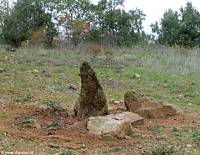|
|
Nature
Switched On
|
|
|
introduction |
2006 November 4 & 5, Saturday & Sunday Time for some stones to be carried and placed. My
plan is to use natural stone generously on some parts of the
terrain. Natural stone is of course abundantly present in this
mountainous area and also the numerous ruins of houses and sheds can
offer an almost unlimited supply of stone. A problem could be the
transport but this is perhaps only a question of contacting the
local handyman or builder. One month later I would be lucky with a
considerable amount of big stones from my neighbour but this I will
|
|
|
The first stone group. Placing
stones is almost a (Japanese) form of art. I try to find the right
combination of naturalness, spontaneity, harmony and a touch of
expressiveness. 4 Nov 11:59 |
||
I am a little bit
reluctant to use debris the way Le Roy uses
it in the Netherlands. He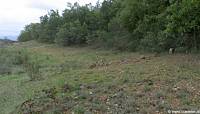 seems to have a supprising supply of beautiful and manageable bricks
which play an important role in the esthetic quality of his ecocathedral.
Debris in Spain may contain everything except this kind of
bricks and I think natural stone is the more obvious choice.
seems to have a supprising supply of beautiful and manageable bricks
which play an important role in the esthetic quality of his ecocathedral.
Debris in Spain may contain everything except this kind of
bricks and I think natural stone is the more obvious choice.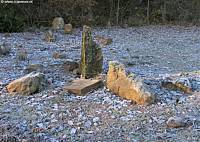
For the moment, not having the supply and transport possibilities, I concentrated on some isolated stonegroups on the drier, higher western part of the terrain.
|
||
| The
stonegroup seen from the northwest. 5 Nov 13:09 |
||
| An impression on January 7, 2007 10:04 | ||
| An olive orchard in a neighbouring village. |
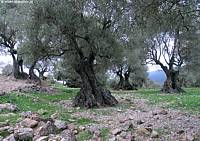 After
some months of concentrating and being busy on our own terrain we
started to explore the surrounding region a bit better. This
resulted also to be a very pleasant experience. The landscape is
formed by cereal fields, olive and almond orchards, wood, rocks and
some small villages scattered over what is really a kind of
highland. Some olive trees must After
some months of concentrating and being busy on our own terrain we
started to explore the surrounding region a bit better. This
resulted also to be a very pleasant experience. The landscape is
formed by cereal fields, olive and almond orchards, wood, rocks and
some small villages scattered over what is really a kind of
highland. Some olive trees must
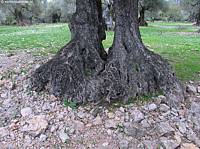 be
several centuries old and perhaps it's time that they received some
kind of official protection because they are beginning to be
commercialised and sell for hundreds of euros while at the same time
they don't always survive the move.. be
several centuries old and perhaps it's time that they received some
kind of official protection because they are beginning to be
commercialised and sell for hundreds of euros while at the same time
they don't always survive the move..
|
|
| 4 Nov 17:04 | ||
|
A nice ground cover on the highest terrace where the soil must be
relatively shallow and/or poor. A Prunella species, small Prunus spinosa shrubs, Sedum sediforme. 5 Nov 9:28 |
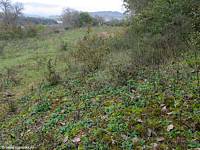 The
next day I took some photographs near the ground surface of some
areas of the terrain. The
next day I took some photographs near the ground surface of some
areas of the terrain. The variety and richness of species is astonishing and it will take me perhaps years to identify all the species, especially the smaller ones. 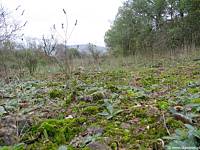 |
|
|
Same area, here with the dried
stems of some Euphrasia species. 5 Nov 9:36 |
||
| In the central lower part:
Centaurea scabiosa,
Picris hieracioides,
Sanguisorba minor, Rubia species, Medicago
species.
|
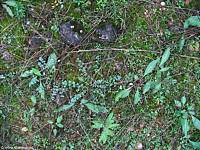 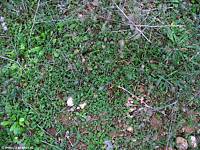
|
In the central part:
Taraxacum sp,
Echium vulgare,
Ajuga chamaepitys,
Alyssum minus,
Eryngium campestre. |
|
introduction |
